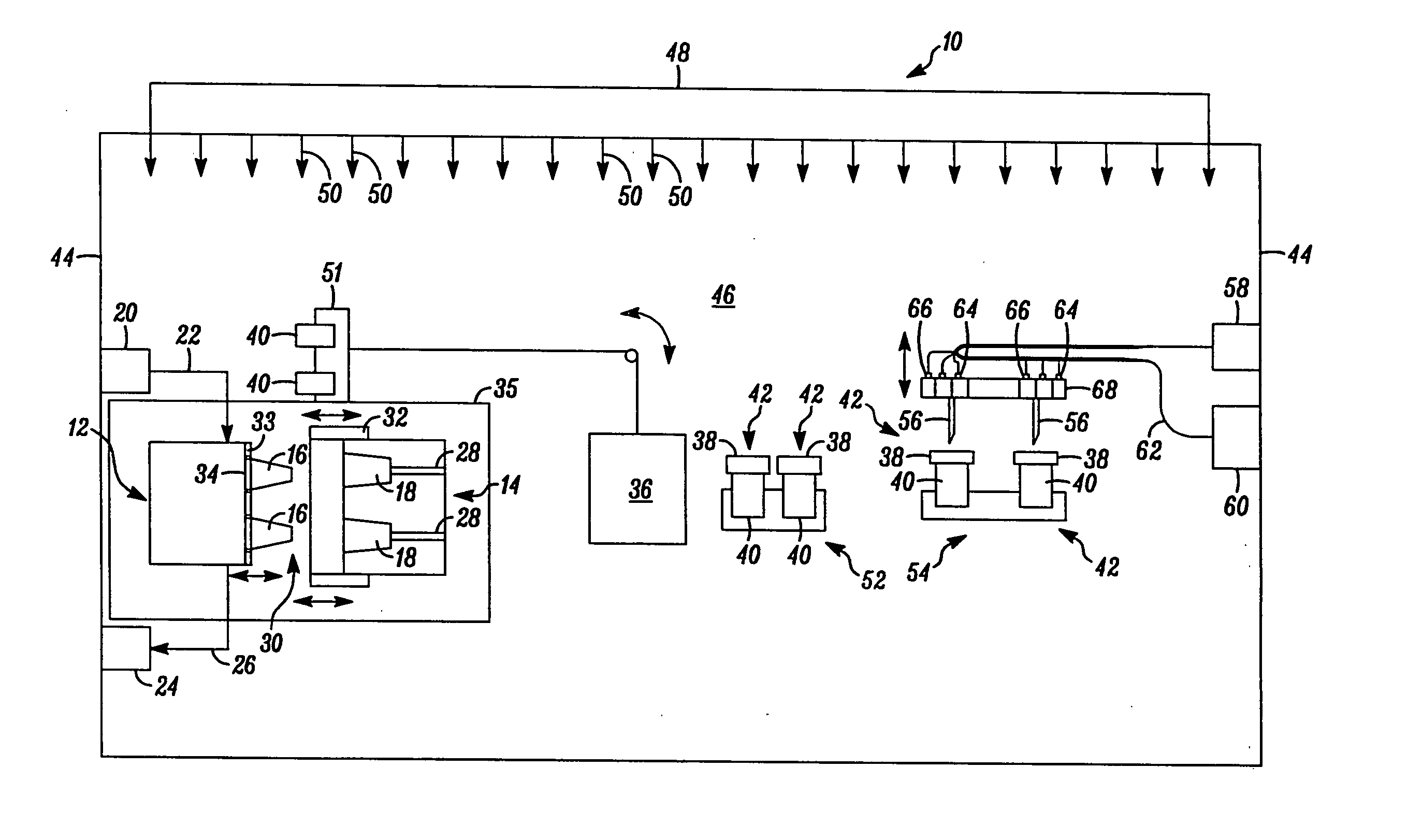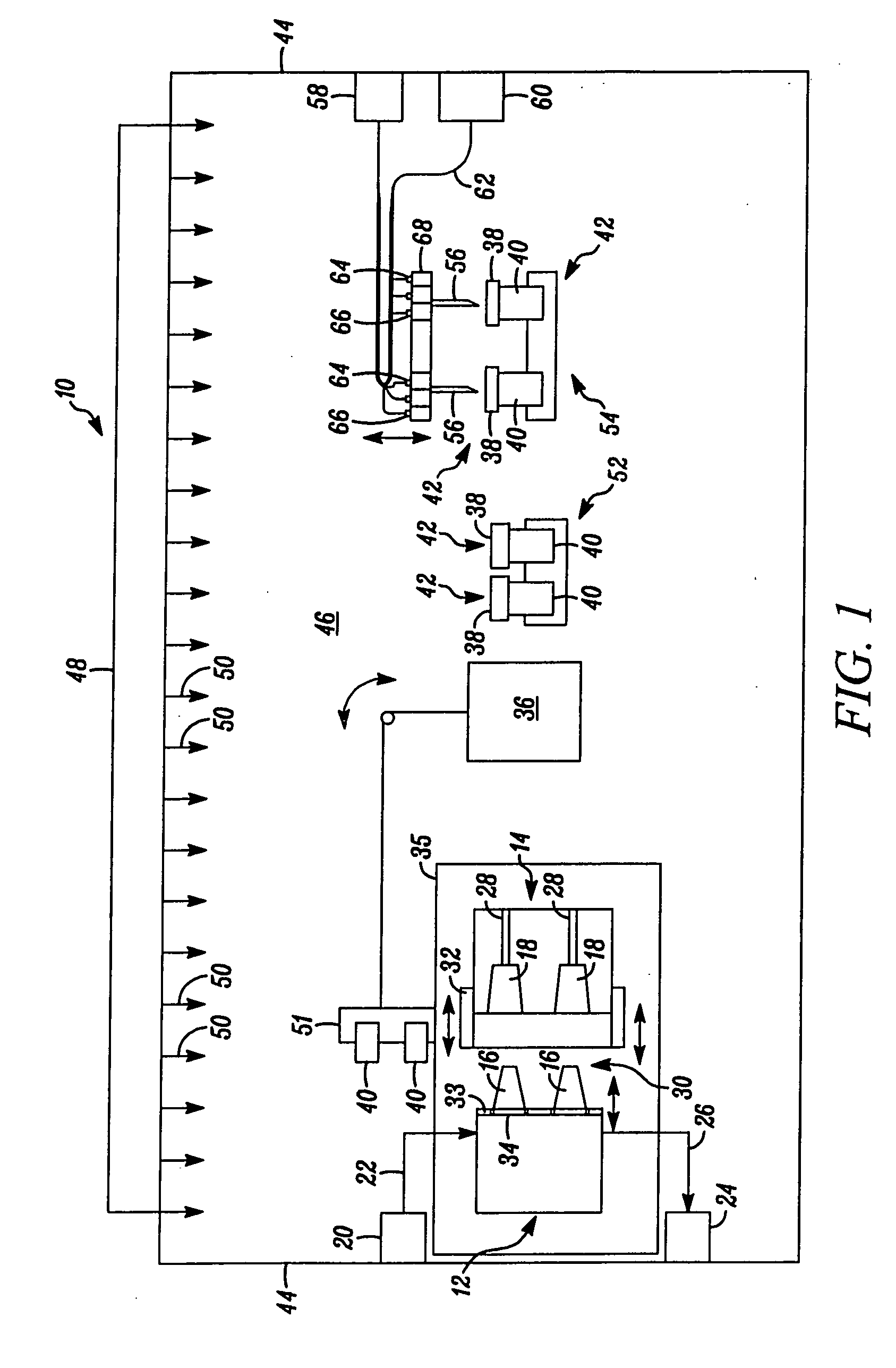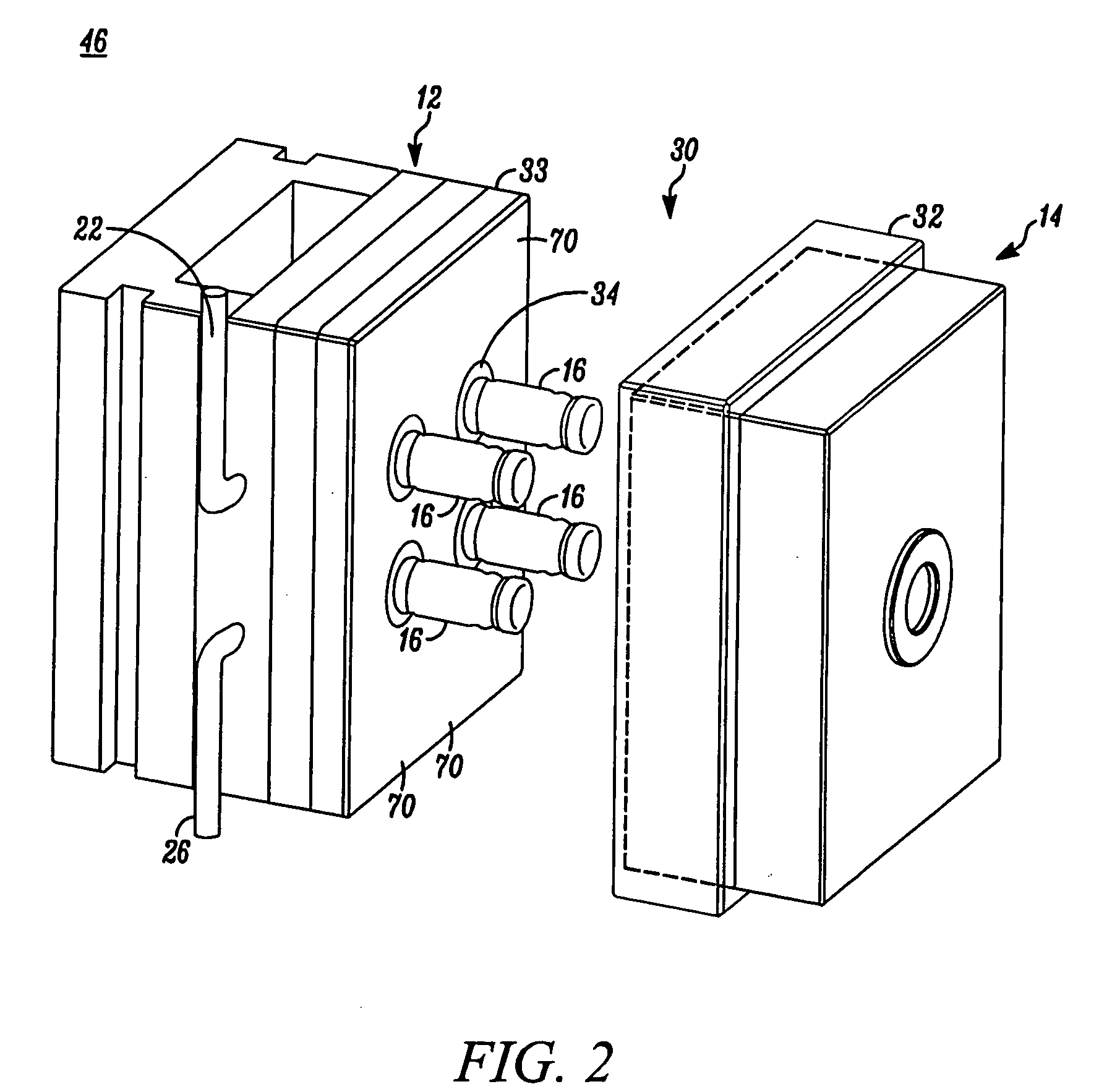Sterile de-molding apparatus and method
a technology of sterile de-molding and molds, applied in the field of sterile de-molding apparatus and methods, can solve the problems of more defectively filled containers than otherwise desired, time-consuming filling process, and high cost of processes and equipment, and achieve the effect of preventing contamination of molded parts
- Summary
- Abstract
- Description
- Claims
- Application Information
AI Technical Summary
Benefits of technology
Problems solved by technology
Method used
Image
Examples
Embodiment Construction
[0046] In FIG. 1, an apparatus embodying the present invention is indicated generally by the reference numeral 10. The apparatus 10 comprises a mold including a first mold half or portion 12, and a second mold half or portion 14. As indicated by the arrows in FIG. 1, at least one of the first and second mold portions 12 and 14 is movable relative to the other in a manner known to those of ordinary skill in the pertinent art between a closed position for molding the parts therein, and an open position for de-molding or releasing the molded parts therefrom. The first mold portion 12 defines a plurality of core pins 16 and the second mold portion 14 defines a plurality of corresponding cavities 18 for receiving therein the core pins 16. When the mold portions are located in the closed position, the core pins and mold cavities cooperate to define the mold cavity shapes for forming the parts therein, such as containers or stoppers. As may be recognized by those of ordinary skill in the p...
PUM
| Property | Measurement | Unit |
|---|---|---|
| vacuum | aaaaa | aaaaa |
| pressure | aaaaa | aaaaa |
| period of time | aaaaa | aaaaa |
Abstract
Description
Claims
Application Information
 Login to View More
Login to View More - R&D
- Intellectual Property
- Life Sciences
- Materials
- Tech Scout
- Unparalleled Data Quality
- Higher Quality Content
- 60% Fewer Hallucinations
Browse by: Latest US Patents, China's latest patents, Technical Efficacy Thesaurus, Application Domain, Technology Topic, Popular Technical Reports.
© 2025 PatSnap. All rights reserved.Legal|Privacy policy|Modern Slavery Act Transparency Statement|Sitemap|About US| Contact US: help@patsnap.com



